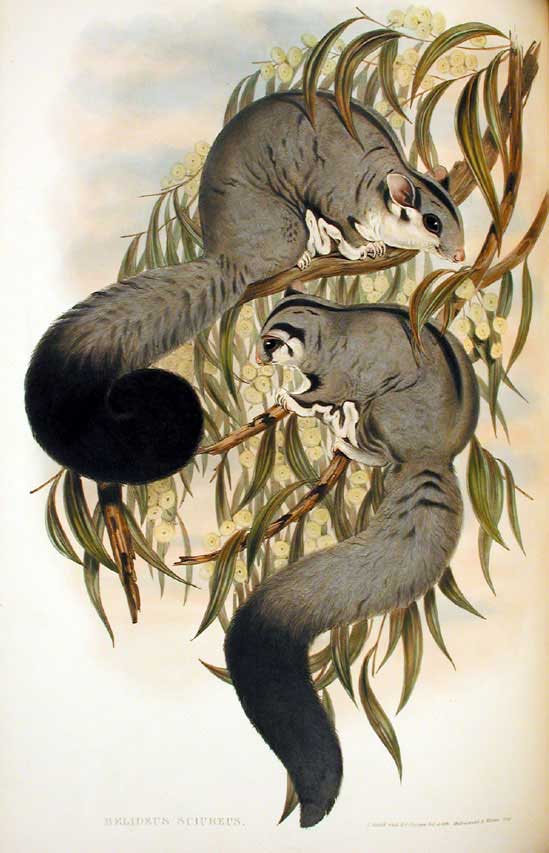Facts About Squirrel glider
The squirrel glider, a nocturnal marsupial from the genus Petaurus, is native to southeastern Australia and northern Queensland. These endearing creatures inhabit dry sclerophyll forests and woodlands, living in family groups typically comprised of one male, two females, and their offspring. They nest in hollow trees, which they line with leaves to create a comfortable home.
In appearance, squirrel gliders are slightly larger than sugar gliders. They have blue-grey or brown-grey fur with a white belly and distinctive black markings. Their notable feature is the gliding membrane that extends from their wrists to their ankles, enabling them to glide through the air. Their prehensile tails function like rudders, aiding in steering.
Their diet is quite diverse, including fruits, insects, tree sap, pollen, nectar, leaves, and bark. This varied menu helps them thrive in their natural habitat.
Breeding for squirrel gliders is most active between June and January. After a gestation period of about 18 days, the female typically gives birth to one or two young annually. The offspring stay in their mother's pouch for about three months before becoming independent at approximately 10 months old. They have a lifespan of around 4-6 years.
Owls are natural predators of the squirrel glider, while introduced species such as dogs, cats, and foxes also pose significant threats. Human activities leading to habitat destruction and fragmentation further endanger their populations. Despite these challenges, the species is currently classified as Least Concern by the IUCN.
The squirrel glider shares its genus with close relatives like the sugar glider and the mahogany glider. These species are believed to have descended from a common marsupial ancestor with gliding membranes. Although they share gliding abilities with flying squirrels, they are not closely related.
Their prehensile tails, used for grasping branches, are homologous structures shared with other possum species. However, the squirrel glider's tail is bushier compared to the ring-tail possum, which also uses its tail for gripping trees.
